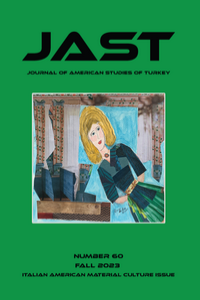Abstract
Giuseppe Garibaldi’s stay on Staten Island, New York in
the humble home of Antonio Meucci is a little-known turning point
in Garibaldi’s life, which invites a reconsideration of the Italian
Risorgimento. The materiality of Meucci’s home and the objects
it houses form the basis for exploring Garibaldi’s connection to the
Italian American narrative. While historians lament that there is little
which is new to say about Garibaldi, this episode on the margins of
Garibaldi’s life, offers a richer portrait of a well-known figure during
one of the most difficult periods of his life. The relationship between
Garibaldi and Meucci remains a subject to investigate. When examining
Garibaldi’s experience on Staten Island he still appears heroic, but he
also emerges as being far more humanized.
References
- Auslander, Leora, et al. “AHR Conversation: Historians and the Study of Material Culture.” The American Historical Review, vol. 114, no. 5, 2009, pp. 1354-404.
- Beauchamp, Christopher. “Who Invented the Telephone? Lawyers, Patents, and the Judgments of History.” Technology and Culture, vol. 51, no. 4, 2010, pp. 854-78.
- Campanella, Anthony P. Giuseppe Garibaldi e la tradizione garibaldina: una bibliografia dal 1807 al 1970. Comitato dell’Istituto Internazionale di Studi Garibaldini, 1971.
- Faustini, Giuseppe. “L’Unita d’Italia: Gli Stati Uniti e Un Garibaldino Americano.” Italica, vol. 89, no. 2, 2012, pp. 202-18.
- Gabaccia, Donna. Italy’s Many Diasporas. Routledge, 2003.
- Garibaldi, Giuseppe. The Life o f General Garibaldi. Translated by Theodore Dwight, A.S. Barnes and Burr, 1859.
- Gay, H. Nelson. “Garibaldi’s American Contacts and His Claims to American Citizenship.” The American Historical Review, vol. 38, no. 1, 1932, pp. 1-19.
- Harrold, Charles Frederick. Carlyle and German Thought: 1819-1834. Yale U P, 1934. Hibbert, Christopher. Garibaldi and his Enemies: The Clash o f Arms and Personalities in the Making o f Italy. New American Library, 1970.
- Huggins, Michael. “The ‘Nation’ and Giuseppe Mazzini, 1842-48.” New Hibernia Review / Iris Eireannach Nua, vol. 17, no. 3, 2013, pp. 15-33.
- Macdonald, Sharon, Jennie Morgan, Harald Fredheim. Heritage Futures: Comparative Approaches to Natural and Cultural Heritage Practices. UCLS Press, 2020.
- Marraro, Howard R. “Garibaldi in New York.” New York History, vol. 27, no. 2, 1946, pp. 179-203.
- Marx, Karl. Capital: Volume One. Trans. and Ed. Tom Griffith. Wordsworth Editions Ltd Ware, 2013.
- Massaro, Dominic R. “The Background, Founding, Evolution and Social Relevance of the Order Sons of Italy in America.” Italian Americana, vol. 24, no. 1, 2006, pp. 20-34.
- Respighi, Luigi. Per la priorita di Antonio Meucci nell’Invenzione del Telefono. Firenze University Press, 2008.
- Riall, Lucy. Garibaldi: Invention o f a Hero. Yale U P, 2007. Ripstein, Arthur. “Commodity Fetishism.” Canadian Journal o f Philosophy, vol. 17, no. 4, 1987, pp. 733-48.
- Scarpaci, Joseph L. “Material Culture and the Meaning of Objects.” Material Culture, vol. 48, no. 1, 2016, pp. 1-9.
- Scirocco, Alfonso. Garibaldi: Citizen o f the World. Translated by Allan Cameron. Princeton U P, 2007.
- Smith, Denis Mack. Garibaldi: A Great Life in Brief. Knopf Press, 1956.
- Trevelyan, George Macaulay. Defense o f the Roman Republic 1848-9. Longmans, Green and Company, 1914.
- ---. Garibaldi and the Making o f Italy, June-November 1860. Longmans, Green and Company, 1926.
- ---. Garibaldi and the Thousand. Longmans, Green and Company, 1912.
Details
| Primary Language | English |
|---|---|
| Subjects | North American Language, Literature and Culture |
| Journal Section | Research Articles |
| Authors | |
| Publication Date | December 31, 2023 |
| Published in Issue | Year 2023 Issue: 60 |
JAST - Journal of American Studies of Turkey


